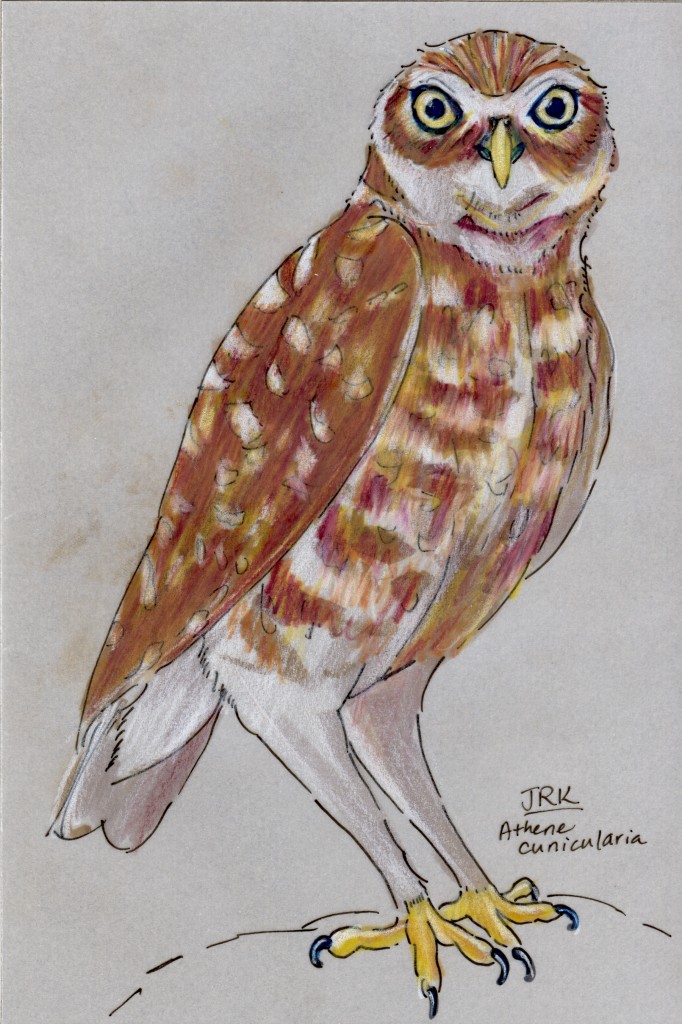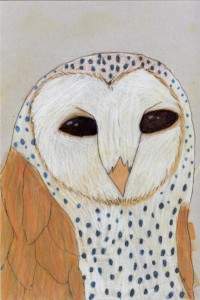Becoming a Naturalist: Owl Eyes (Athene cunicularia)
A few years ago, I bought a copy of Mammal Tracks and Sign, which includes a sidebar about the importance of having a basic comfort with and knowledge of the natural world before you can start to track. The book recommended a program called Kamana, an at-your-own-pace naturalist training program. I asked my husband Ted for the program for Christmas and got it, and then I did nothing with it for a couple of years.
Then we adopted our kids, Theo and Coco, and then we realized that the best bet for them was homeschooling. We homeschooled Theo last year, and this year his sister joined up. I brought out my Kamana book and all four of us started working through it as a major part of our homeschool curriculum.
And it’s amazing! The first book is divided into two “trails.” The first, which we’ve completed, is about becoming more aware of your surroundings. The exercises in it have been so helpful and fun to us. We’ve just started the second trail, which involves learning about the different life forms in our area. (We are stalled on the mammal chapter at the moment, strangely enough.)
In part of the book, you practice using your senses in a new way, and you look to various animals as inspiration. The kids and I drew the animals we were learning from, and I thought I’d share them with you as a special series on the Daily Mammal. (I don’t know where Theo’s drawings are so I haven’t scanned them, but if he gives them to me, maybe you’ll be able to see them in some of these posts. In the meantime, enjoy Coco’s beautiful work.)
The first tool we practiced using was our Owl Eyes. Because of their shape, owls’ eyes are fixed in place: owls move their heads instead of their eyes. When we practiced Owl Eyes, we literally perched, on a wall, a rock, or the couch, and kept our eyes still, relaxing until we could make full use of our peripheral vision, which let us see the sky, the ground, and all around without moving. When we did want to look somewhere else, we moved our head instead of our eyes. You can take in more than you think using just the “corners” of your eyes if you practice. This can be useful out in the field if you catch some movement and don’t want to startle an animal by suddenly turning your head. Owl Eyes was the first step toward broadening our awareness in general: we’re learning to notice not just what’s directly in front of us, but the bigger picture.
Below is Coco’s barn owl. I’m not sure I’ve ever seen a more beautiful drawing, honestly.



You’re right, Jennifer — this owl drawing of Coco’s is quite amazing. It’s such an embodiment of calm, strength and wisdom! I love it!
Yours is no slouch either! I’m particularly drawn to the eyes, but the whole composition is exciting! This owl is at attention!
Thanks, Ted!
Albertonykus, don’t worry, they’re not invading. This is only the second ever, and there are no more coming in the foreseeable future.
The non mammals are invading!
Aw man. -Was secretly hoping to see dinosaurs (birds) take over- (Just joking, of course. I follow enough dinosaur blogs already!)